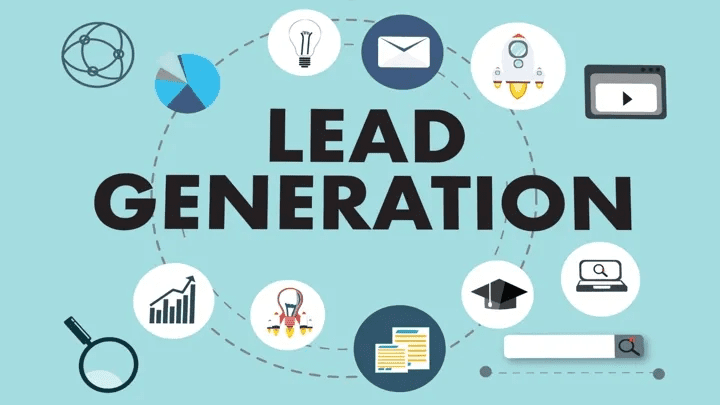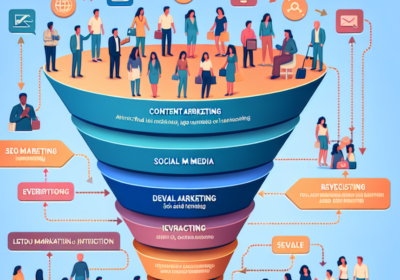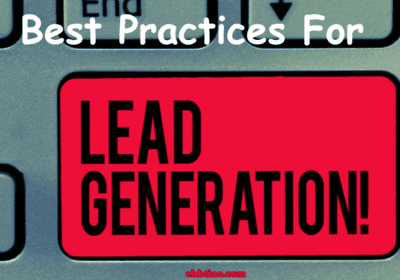How To Generate Leads In Marketing
How to generate leads in marketing: generating is both an art and a science, and understanding the balance between the two can dramatically impact our success.
In the digital age, it’s not enough to simply attract attention; we need a strategy that nurtures potential clients from initial interest to loyal customer.
This involves leveraging targeted content, engaging across multiple platforms, utilizing advanced analytics, and building genuine relationships.
By honing these skills, we position ourselves to thrive in a competitive landscape, converting prospects into profitable leads.
Let’s dive in and explore how we can master the art of lead generation in marketing.
Have you ever wondered how to generate leads in marketing effectively? We have been there too.
It’s a bustling world out there with countless strategies, platforms, and tools promising to bring in the leads. But which ones truly work?
Today, we’ll walk through some proven methods to generate leads in marketing.
No technical jargon or complex theories, just straightforward, actionable advice that can help us all succeed in our marketing endeavors.

Understanding Lead Generation
Lead generation is the process of attracting and converting strangers and prospects into someone who has indicated interest in our company’s product or service.
It involves capturing their information such as name, email, or phone number through various tactics like forms, social media, and content marketing.
Why Lead Generation Matters
Simply put, without leads, we have no one to sell to, which means no sales, no revenue, and ultimately, no business.
Lead generation is the lifeblood of our marketing efforts. The more we can master it, the better off our business will be.
Key Strategies to Generate Leads
Let’s dig into some of the most effective strategies for generating leads.
Content Marketing
Content marketing is king in the realm of digital marketing.
By creating and sharing valuable content, we can attract and engage our target audience, ultimately driving them to take action.
Blog Posts
Creating insightful and informative blog posts on topics relevant to our audience can drive traffic to our site, positioning us as a thought leader in our industry.
When visitors find value in our content, they’re more likely to trust us and provide their contact details.
E-Books and Whitepapers
Offering downloadable resources like e-books and whitepapers in exchange for contact information is a proven lead generation tactic.
These resources should provide in-depth information that addresses our audience’s pain points and challenges.
Webinar and Live Events
Hosting webinars and live events can engage our audience in a more interactive way.
By offering valuable content and insights during these sessions, we can encourage attendees to share their contact information to receive updates or recordings.
Social Media
These platforms are not just for connecting with friends.
They offer a treasure trove of lead generation opportunities.
Facebook Lead Ads
Lead ads fom Facebook are designed specifically for collecting lead information without leaving the platform.
Users can quickly fill out a form pre-populated with their Facebook profile information, making it easy and convenient.
| Benefits | Explanation |
|---|---|
| Ease of Use | Forms are simple and pre-filled with user data. |
| High Conversion Rate | Users stay within the platform, reducing friction. |

LinkedIn is a powerhouse for business networking and lead generation.
We can use LinkedIn’s features like sponsored content, InMail, and lead gen forms to connect with professionals and collect their information.
Instagram and Twitter
On Instagram and Twitter, we can use targeted ads, contests, and engaging content to drive traffic to our landing pages where users can provide their contact details.
Email Marketing
Email marketing is one of the most effective ways to nurture and convert leads.
By delivering personalized and valuable content directly to our audience’s inbox, we can build strong relationships and trust.
Signup Forms
We should place signup forms on high-traffic pages of our website, offering visitors a reason to subscribe.
Whether it’s exclusive content, discounts, or updates, the incentive should be clear and compelling.
Newsletters
Regular newsletters keep us connected with our audience, providing them with ongoing value and information.
This consistent engagement helps keep our business top-of-mind when they’re ready to make a purchase.
Drip Campaigns
Drip campaigns are automated email sequences that nurture leads over time.
By segmenting our audience based on their behavior and interests, we can deliver personalized content that moves them through the sales funnel.
SEO and SEM
Search engine optimization (SEO) and search engine marketing (SEM) are crucial for driving organic and paid traffic to our site.
The better we rank on search engines, the more visible we are, and the more leads we can generate.
Keyword Research
We need to understand what our audience is searching for and create content around those keywords.
Tools like Google Keyword Planner, SEMrush, and Ahrefs can help us identify high-traffic keywords relevant to our business.
On-Page SEO
On-page SEO involves optimizing our website’s content and structure.
This includes title tags, meta descriptions, header tags, and internal linking.
A well-optimized site improves user experience and makes it easier for search engines to crawl and index our pages.
Paid Search
Using platforms like Google Ads, we can create targeted ads that appear at the top of search results.
These pay-per-click (PPC) ads can drive immediate traffic to our site, leading to quick lead generation.
Referral Programs
Word-of-mouth remains one of the most powerful marketing tools.
A referral program encourages our existing customers to refer new leads to our business by offering incentives.
Creating a Referral Program
We need to make it easy for our customers to refer others.
This could involve providing them with shareable links, offering discounts or rewards for successful referrals, and promoting the program through email and social media.
| Component | Description |
|---|---|
| Shareable Links | Easy-to-use links that customers can share with their network. |
| Incentives | Discounts, rewards, or special offers for successful referrals. |
| Promotion | Promoting the program through various channels like email and social media. |
Partner and Affiliate Marketing
Partnering with other businesses can expand our reach and introduce us to new audiences.
Affiliate marketing involves working with individuals or companies who promote our products in exchange for a commission.
Finding the Right Partners
We should look for partners whose audience aligns with ours but are not direct competitors.
By collaborating on content, events, or promotions, both parties can benefit from the relationship.
Managing Affiliate Programs
Using platforms like ShareASale, CJ Affiliate, or Rakuten Marketing, we can create and manage our affiliate programs, tracking performance and ensuring fair compensation for our affiliates.
How To Generate Leads In Marketing Video
Tools to Enhance Lead Generation
Several tools can help us streamline and optimize our lead generation efforts.
Here are some of the most popular ones:
Customer Relationship Management (CRM) Systems
CRM systems like Salesforce, HubSpot, and Zoho CRM help us manage and analyze customer interactions throughout the customer lifecycle, ultimately enhancing relationships and driving sales growth.
Marketing Automation Platforms
Tools like Marketo, Pardot, and Mailchimp automate repetitive marketing tasks, allowing us to focus on strategy and creativity.
These platforms can handle email marketing, social media posting, and campaign tracking.
Analytics and Reporting Tools
Analytics tools like Google Analytics, SEMrush, and Hotjar provide insights into our website’s performance, helping us understand user behavior and optimize our lead generation strategies.
Lead Capture Forms and Landing Page Builders
Tools like Unbounce, Leadpages, and OptinMonster help us create high-converting landing pages and lead capture forms without needing extensive design or coding skills.
Measuring Lead Generation Success
To ensure our lead generation strategies are effective, we need to measure and analyze our results.
Here are some key metrics to track:
Conversion Rate
This measures the percentage of visitors who take the desired action, such as filling out a form or signing up for a newsletter.
A high conversion rate indicates our strategy is working.
Cost Per Lead (CPL)
CPL helps us understand how much we’re spending to acquire each lead.
By comparing this cost against our revenue per lead, we can determine the profitability of our campaigns.
Lead Quality
Not all leads are created equal.
We need to assess the quality of our leads by looking at factors like their level of engagement and their fit with our target audience.
Return on Investment (ROI)
ROI measures the overall effectiveness and profitability of our lead generation efforts.
By calculating the revenue generated from our leads against our total marketing costs, we can determine the success of our campaigns.

Continuous Improvement
Lead generation is not a one-time effort. It’s an ongoing process that requires continuous testing, analysis, and optimization.
By regularly reviewing our strategies and results, we can identify areas for improvement and make necessary adjustments.
A/B Testing
A/B testing involves comparing two versions of a web page, email, or ad to see which one performs better.
This helps us understand what works best for our audience and refine our strategies accordingly.
Common Elements to Test
- Headlines: Test different headlines to see which one captures more attention.
- Call-to-Action (CTA): Experiment with different CTA phrases, placements, and designs.
- Images and Videos: See how different visual elements impact engagement and conversion.
Audience Feedback
Gathering feedback from our audience can provide valuable insights into their needs and preferences.
Surveys, interviews, and social media listening can help us understand their pain points and tailor our strategies accordingly.
Staying Updated
The marketing landscape is constantly evolving.
By staying updated with the latest trends, tools, and best practices, we can ensure our lead generation efforts remain effective and competitive.
How To Generate Leads In Marketing Summary
How To Generate Leads In Marketing is both an art and a science.
By leveraging a mix of content marketing, social media, email marketing, SEO and SEM, referral programs, and partnerships.
We can attract and convert high-quality leads.
Utilizing the right tools and continuously measuring and optimizing our efforts is key to long-term success.
So, let’s roll up our sleeves and start generating those leads!
Together, we can master the art of lead generation and drive our business to new heights.








